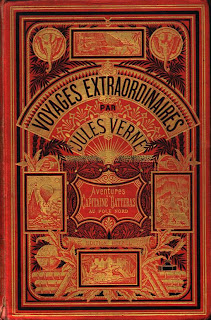
Born in 1919 in Montmartre (Paris), in the art studio of his grandparents, Hortense Dury-Vasselon et Marius Vasselon, both of whom were accomplished painters, Claude Le Baube lead a life of two passions: sailing and painting.
Le Baube started drawing very young. He was talented and encouraged by his parents, Marthe Vasselon and Robert Le Baube, excellent illustrators in their own right. As a child, he was a huge fan of Jules Verne and spent countless hours pouring over the lavishly illustrated Hetzel collection of Jules Verne novels which would serve as a source of inspiration throughout his life (for illustrating of course, but perhaps too, for his incredible gift of story telling - another art form he truly mastered during his lifetime).
Throughout his 30-year career of voyages around the world aboard naval ships and cruise liners, Le Baube never neglected his love for painting. He always traveled with paint and brushes and set up his easel and canvases in ports of call around the globe. During his visits home, he frequented the Parisian art studios and studied under the masters Fernand Leger, André Lhote and Yves Brayer.
 "La Pasteque"
"La Pasteque"His work includes natural landscapes, seascapes, still life and surreal scenes of mythical or imaginary inspiration. He also painted ships and historical naval battle scenes from all eras with extraordinary precision, exposing his talents as both a gifted artist and an erudite historian. He has illustrated more than 20 books for the French Navy. The last years of his life were spent with his family and two dogs in Aix-En-Provence where he painted profusely when he was not cooking, entertaining family, friends and a wide circle of admirers.
 Claude Le Baube at work in his studio in Aix-En-Provence, 2005.
Claude Le Baube at work in his studio in Aix-En-Provence, 2005. Juliette Fray with "Gabelou".
Juliette Fray with "Gabelou".Commentary by French Art Critic Henri Feyt, 1998.
(Translated from French by Cynthia Fray).
"Armed with uncommon technical skills, this navigator rapidly reveals himself as an excellent seascape artist. The subject of the sea inspires a sense of modesty, deprivation and purity for him. The artist seems to find himself there with his motivations and deep roots geographically close to the somber seas of Normandy. Undoubtedly, the native pallor of the skies we find in his work comes from there, as does an undeniable sensation of a free existence - one that, above all, cherished the sea.
Claude’s evolution might have stopped there if, at the age of navigational retirement, which is to say still relatively young, he hadn’t latched onto what we could call the pictorial adventure of his life.
In this new venture, at once original and ambitious, the artist-sailor who’d forgotten nothing of his origins, will attempt, in his own way, to sail back up the river of Time in order to capture, as if by a series of snapshots that would become canvases, some references or striking memories.
The artist disposes with but a mere skiff for this expedition: a dozen object-symbols, who take turns in compositions or juxtapositions that might appear insolent, if, during this long voyage, these object-symbols hadn’t visibly sympathized with one another under a wand of eminent and sensitive coherence.
Thus an impression of temperate surrealism is born, where the author never crosses the frontier of the unconscious in this symbolic voyage through the mist of memory. Carrying at heart, of course, the secret dream of every life’s end: to perhaps brush against the youth of roses once more ….
Refinement and light nostalgia are his travel companions."
Awards:
La Jeune Peinture - Marseille 1960; 1st Prize
Concours du Palais Royal - Paris 1965; 1st Prize













No comments:
Post a Comment